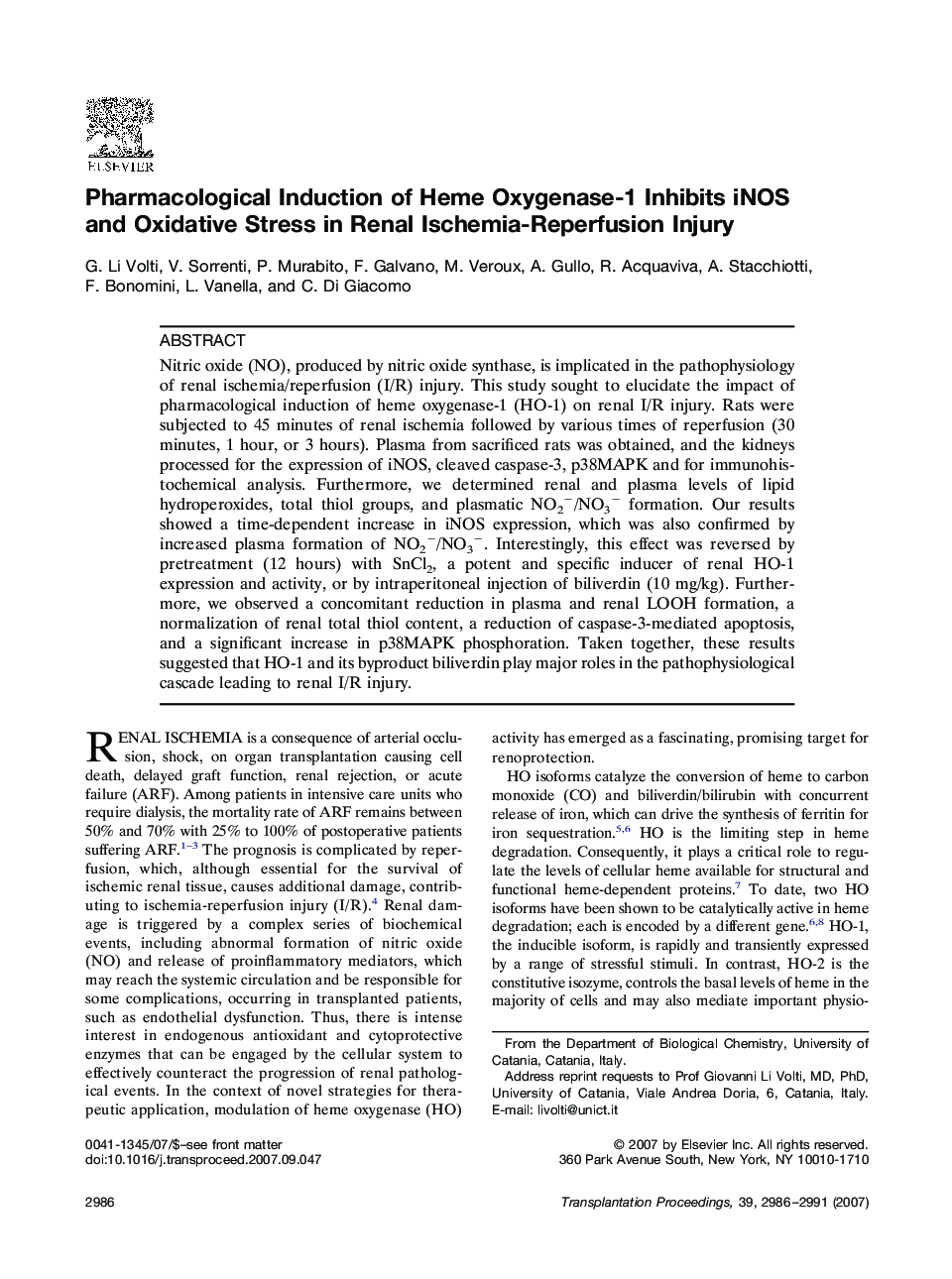| Article ID | Journal | Published Year | Pages | File Type |
|---|---|---|---|---|
| 4262708 | Transplantation Proceedings | 2007 | 6 Pages |
Nitric oxide (NO), produced by nitric oxide synthase, is implicated in the pathophysiology of renal ischemia/reperfusion (I/R) injury. This study sought to elucidate the impact of pharmacological induction of heme oxygenase-1 (HO-1) on renal I/R injury. Rats were subjected to 45 minutes of renal ischemia followed by various times of reperfusion (30 minutes, 1 hour, or 3 hours). Plasma from sacrificed rats was obtained, and the kidneys processed for the expression of iNOS, cleaved caspase-3, p38MAPK and for immunohistochemical analysis. Furthermore, we determined renal and plasma levels of lipid hydroperoxides, total thiol groups, and plasmatic NO2−/NO3− formation. Our results showed a time-dependent increase in iNOS expression, which was also confirmed by increased plasma formation of NO2−/NO3−. Interestingly, this effect was reversed by pretreatment (12 hours) with SnCl2, a potent and specific inducer of renal HO-1 expression and activity, or by intraperitoneal injection of biliverdin (10 mg/kg). Furthermore, we observed a concomitant reduction in plasma and renal LOOH formation, a normalization of renal total thiol content, a reduction of caspase-3-mediated apoptosis, and a significant increase in p38MAPK phosphoration. Taken together, these results suggested that HO-1 and its byproduct biliverdin play major roles in the pathophysiological cascade leading to renal I/R injury.
